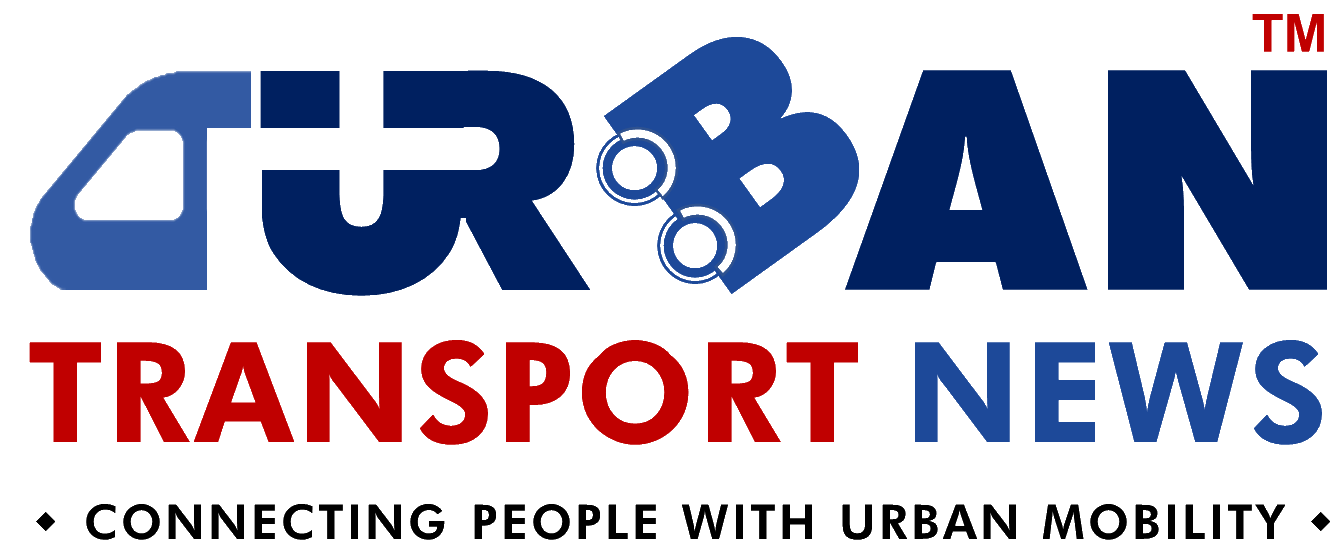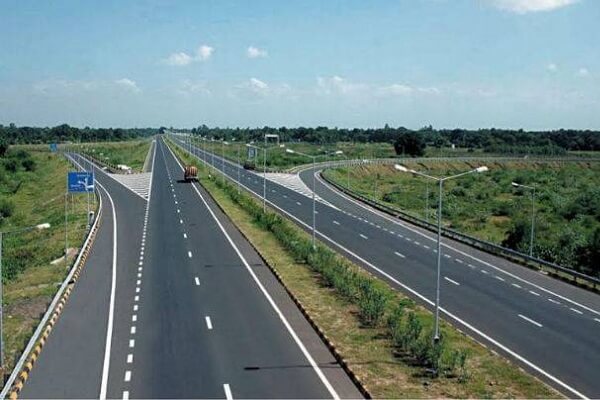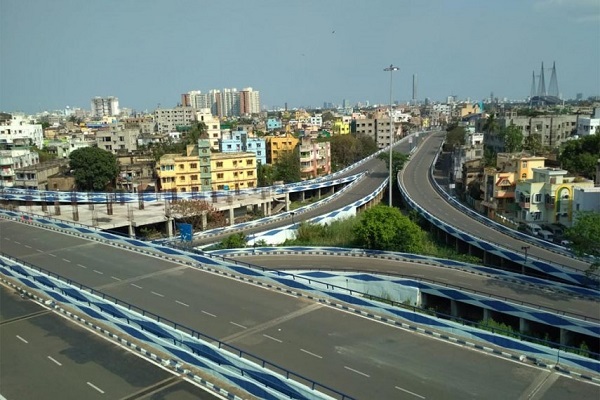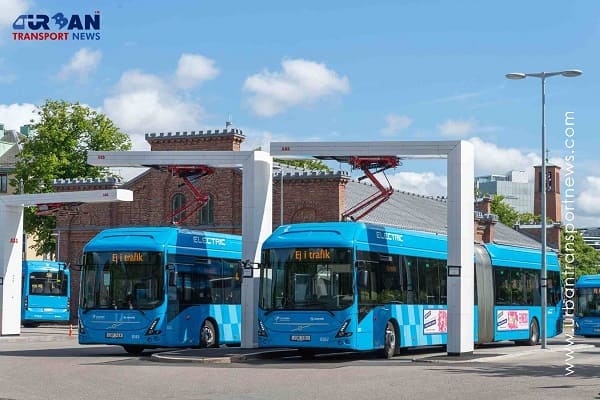 No Petrol, Diesel Vehicle Sales in India - Nitin Gadkari, Former Road & Transport Minister
No Petrol, Diesel Vehicle Sales in India - Nitin Gadkari, Former Road & Transport Minister EGIS-SYSTRA JV awarded contract to supervise High Speed Rail Project in Egypt
EGIS-SYSTRA JV awarded contract to supervise High Speed Rail Project in Egypt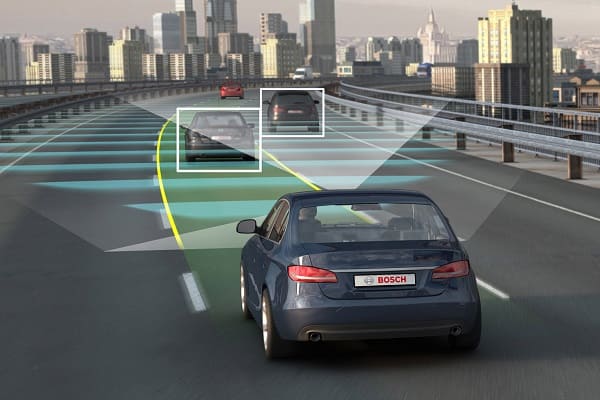 Navigating India's automotive future with connectivity and location intelligence
Navigating India's automotive future with connectivity and location intelligence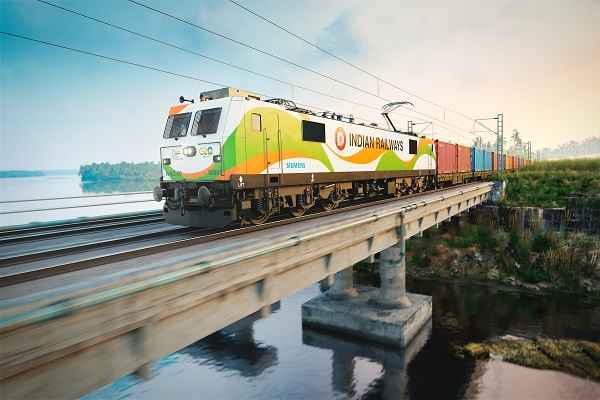 GSV signs strategic MoUs with NOKIA, Jacobs and Plasser India
GSV signs strategic MoUs with NOKIA, Jacobs and Plasser India Indian Railways likely to launch first Sleeper Vande Bharat Train on Secunderabad-Pune Route
Indian Railways likely to launch first Sleeper Vande Bharat Train on Secunderabad-Pune Route EMV cards and EMV technology in Public Transport Ticketing
EMV cards and EMV technology in Public Transport Ticketing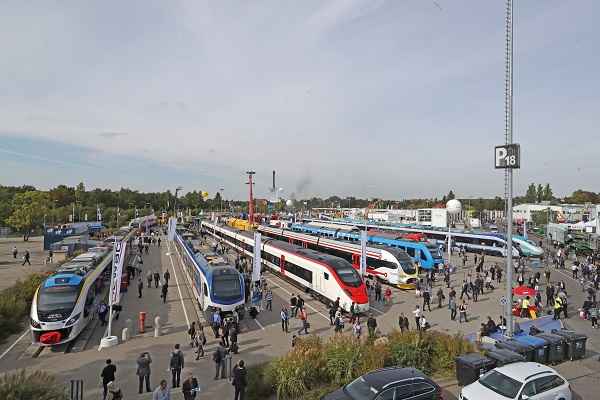 Hitachi Rail acquires Thales’ Ground Transportation Business for €1.66 Billion
Hitachi Rail acquires Thales’ Ground Transportation Business for €1.66 Billion Exclusive Interview with Harj Dhaliwal, Chief Business & Capital Programmes Officer at Nevomo
Exclusive Interview with Harj Dhaliwal, Chief Business & Capital Programmes Officer at Nevomo Navigating the Future: The Crucial Interplay between Public Transport and Climate Change
Navigating the Future: The Crucial Interplay between Public Transport and Climate Change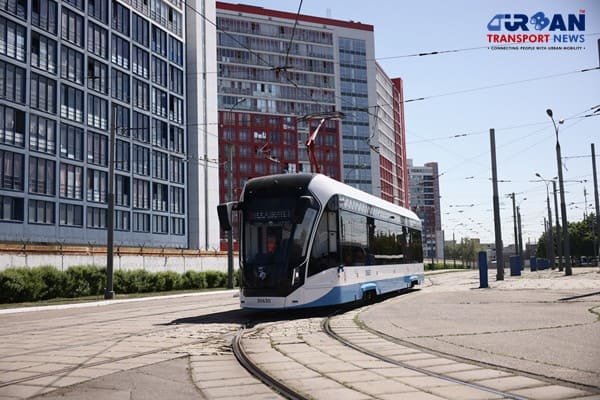 Moscow Opens New Center for Electric Transport and Driverless Technologies
Moscow Opens New Center for Electric Transport and Driverless Technologies
Navigating the Future: The Crucial Interplay between Public Transport and Climate Change

In the face of escalating climate change challenges, public transport emerges as a beacon of hope and practical environmental stewardship. Positioned at the crossroads of advancing urbanization, technological innovation, and the imperative for sustainable solutions, the nexus between public transport and climate change becomes paramount in steering our collective future responsibly. The escalating global temperatures and increasing frequency of extreme weather events underscore the urgent need for decisive action. As significant contributors to carbon emissions, transportation systems present both challenges and opportunities for mitigating environmental impacts. Here we wield considerable influence over the direction of this pivotal shift. Recognizing the multifaceted role of sustainable transportation practices as catalysts for positive change, we delve into the intricate relationship between public transport and climate change. Beyond its conventional role of moving people, public transport emerges as a linchpin in mitigating the environmental consequences of human mobility. From addressing the carbon footprint of transport systems to embracing the electrification revolution and prioritizing community engagement, our decisions today profoundly shape the sustainability and resilience of future transportation landscapes. Embracing this shared responsibility, we embark on a journey to navigate towards a sustainable future for our planet, driven by the imperative to address the crucial interplay between public transport and climate change.
Public Transport: A Crucial Pillar for Climate Action and Sustainable Future
Public transport stands as a linchpin in the global effort to combat climate change and pave the way towards a sustainable future. As we confront the challenges posed by a changing climate and rapid urbanization, the interplay between public transport and climate action emerges as a vital determinant of our collective resilience and sustainability. Here's why public transport is crucial in navigating the path forward:
Reducing Carbon Emissions: Public transport offers low-carbon alternatives to individual vehicle use, playing a pivotal role in mitigating carbon emissions and curbing the environmental impact of urban mobility. This reduction is imperative for achieving global climate targets and fostering a more sustainable transportation system.
Building Climate Resilience: With climate change bringing about more frequent and severe weather events, integrating climate resilience into public transport infrastructure becomes imperative. Ensuring the continuity of services and the safety of communities in the face of climate-related challenges is essential for sustainable urban development.
Promoting Equitable Access: Access to sustainable transportation options is fundamental for promoting social equity and resilience in communities. Guaranteeing that all individuals, regardless of socioeconomic status, have access to affordable and reliable public transport services fosters inclusivity and reduces disparities in mobility.
Optimizing Resource Utilization: Public transport optimizes resource utilization by transporting multiple passengers in a single vehicle, thereby reducing congestion and maximizing efficiency. This efficient use of resources is vital for sustainable urban development and minimizing the environmental footprint of transportation systems.
Engaging Communities: Engaging communities in climate action and transportation planning empowers individuals to actively contribute to sustainability efforts. By providing education and fostering awareness about the environmental benefits of public transport, communities can adopt sustainable travel behaviors and drive positive change.
Encouraging Innovation and Collaboration: Collaboration across sectors and innovation in technology are essential for advancing sustainable transport solutions. By fostering collaboration between governments, private companies, and community organizations, we can accelerate the transition to a more resilient and environmentally friendly transportation system.
We conclude that the interplay between public transport and climate change is indispensable for navigating the future responsibly. By prioritizing sustainability, resilience, and community engagement, we can build transportation systems that not only meet the needs of today but also ensure a more sustainable and equitable future for generations to come.
Urbanization Challenges and the Shift to Alternate Fuels: Navigating the Future of Public Transport
As cities continue to expand and populations grow, urbanization presents a myriad of challenges for transportation systems worldwide. From increased congestion and sprawling development to disparities in access, urbanization necessitates innovative solutions to ensure sustainable mobility for all. In response to these challenges, the integration of public transport with urban planning and the adoption of alternate fuels emerge as key strategies to navigate the complexities of urban growth while mitigating environmental impacts. Let's delve into these critical aspects of urbanization and the shift towards sustainable transportation.
Addressing Urbanization Challenges:
Congestion Management: Rapid urbanization often leads to increased congestion on roads, which contributes to higher carbon emissions and decreased air quality. Public transport plays a vital role in managing congestion by providing efficient alternatives to individual car use, thus alleviating traffic congestion and reducing environmental impacts.
Land Use Optimization: Urbanization results in increased demand for land, leading to urban sprawl and inefficient land use patterns. Public transport facilitates more compact urban development by concentrating development around transit hubs, reducing the need for sprawling infrastructure and preserving natural habitats.
Accessibility for All: Urbanization can exacerbate disparities in access to transportation, particularly for marginalized communities. Public transport initiatives must prioritize equitable access to transit services, ensuring that all residents, regardless of income or location, have convenient access to affordable and reliable transportation options.
Integration with Urban Planning: Effective urban planning is essential for managing the impacts of urbanization on transportation systems. Public transport planning should be integrated into broader urban development strategies to ensure that transit services are aligned with the needs of growing urban populations and support sustainable growth patterns.
Promoting Alternate Fuels:
Reducing Dependency on Fossil Fuels: The transportation sector is a significant contributor to greenhouse gas emissions, primarily through the combustion of fossil fuels. Transitioning to alternate fuels, such as biofuels, hydrogen, and compressed natural gas, reduces dependency on fossil fuels and lowers carbon emissions from public transport fleets.
Enhancing Energy Security: Diversifying the fuel sources used in public transport enhances energy security by reducing reliance on imported fossil fuels. Renewable fuels, such as biofuels and hydrogen, offer domestic alternatives that can be produced locally, reducing vulnerability to supply disruptions and price fluctuations in global energy markets.
Promoting Technological Innovation: The adoption of alternate fuels stimulates technological innovation in the transportation sector, driving the development of more efficient and sustainable vehicles and infrastructure. Investing in research and development of alternate fuel technologies fosters economic growth and positions public transport systems as leaders in environmental sustainability.
Improving Air Quality: Many alternate fuels produce fewer harmful emissions than traditional fossil fuels, leading to improved air quality in urban areas. By transitioning to cleaner fuels, public transport operators can reduce air pollution and mitigate the adverse health effects associated with poor air quality, benefiting both passengers and the broader community.
Deciphering the Carbon Conundrum: Public Transport's Role in Climate Change Mitigation:
The Carbon Conundrum looms large as one of the most pressing challenges we face in the fight against climate change. At the heart of this conundrum lie the relentless emission of carbon dioxide and other greenhouse gases, primarily from the combustion of fossil fuels in transportation. Public transport, while offering a promising solution, finds itself entangled in this web of emissions as both a contributor and a potential mitigator. The transportation sector stands as a significant emitter of greenhouse gases, accounting for a substantial portion of global carbon emissions. With urbanization on the rise and personal vehicle ownership escalating, the carbon footprint of transportation continues to escalate, exacerbating the already dire predicament of climate change. The challenge lies in finding sustainable alternatives that can meet the growing demand for mobility while drastically reducing carbon emissions. Public transport emerges as a beacon of hope in this carbon conundrum, offering a pathway towards decarbonizing transportation systems. By providing low-carbon alternatives to individual vehicle use, such as buses, trains, and trams, public transport has the potential to significantly reduce emissions and curb the environmental impact of urban mobility. However, realizing this potential requires concerted efforts from policymakers, urban planners, and transport authorities to prioritize and invest in sustainable public transport infrastructure and services. The Carbon Conundrum underscores the urgent need for transformative action in the realm of transportation. It serves as a reminder of the pivotal role that public transport plays in the fight against climate change and the imperative to accelerate the transition towards sustainable and low-carbon mobility solutions. Only by addressing this conundrum head-on can we hope to navigate towards a future that is both resilient and environmentally sustainable.
Seamless Solutions: The Power of Multi-Modal Integration in Sustainable Transportation
In the endeavour to navigate the future amidst the challenges of climate change, Multi-Modal Integration emerges as a pivotal strategy in reshaping our transportation landscape. At its core, multi-modal integration involves seamlessly connecting various modes of transportation, such as buses, trains, bicycles, and walking paths, to create a comprehensive and efficient network that meets the diverse needs of commuters while minimizing environmental impact. The concept of multi-modal integration holds immense promise in addressing the carbon footprint of transportation. By providing commuters with a range of sustainable options beyond individual car use, such as combining cycling with public transit or walking to nearby transit hubs, multi-modal integration promotes a shift towards low-carbon modes of travel. This not only reduces emissions but also alleviates congestion and improves air quality in urban areas. Furthermore, multi-modal integration fosters accessibility and inclusivity by ensuring that transportation networks cater to the needs of all individuals, regardless of their mobility preferences or abilities. By offering convenient connections between different modes of transport and enhancing accessibility features, such as wheelchair ramps and priority seating, multi-modal systems empower communities and promote social equity. Effective multi-modal integration requires collaboration and coordination among various stakeholders, including transportation agencies, urban planners, and local governments. By working together to design interconnected transit routes, integrate ticketing systems, and develop supportive infrastructure such as bike lanes and pedestrian walkways, these stakeholders can create a seamless and user-friendly transportation experience for commuters. Finally, the multi-modal integration represents a transformative approach to addressing the interplay between public transport and climate change. By promoting sustainable travel behaviour’s, enhancing accessibility, and fostering collaboration among stakeholders, multi-modal integration paves the way towards a future where transportation systems are resilient, inclusive, and environmentally sustainable.
Building Climate-Resilient Public Transport: Navigating the Challenges of Climate Change
In the context of navigating the future amidst the challenges of climate change, Adaptation and Resilience emerge as indispensable principles for ensuring the sustainability and effectiveness of public transport systems. As our climate continues to change, transportation infrastructure faces increasing risks from extreme weather events, rising sea levels, and other climate-related impacts. Therefore, it is imperative that public transport systems are designed and managed with adaptability and resilience in mind. Adaptation involves proactively adjusting to changing environmental conditions to minimize vulnerability and maximize effectiveness. This may include measures such as elevating infrastructure to mitigate flood risk, reinforcing bridges and tunnels to withstand stronger storms, and incorporating green infrastructure to manage heat and rainfall. By integrating climate resilience into the design and operation of public transport systems, cities can ensure that transportation services remain reliable and accessible even in the face of changing climatic conditions. Resilience, on the other hand, refers to the ability of public transport systems to recover quickly and efficiently from disruptions caused by climate-related events. This requires robust planning, emergency response protocols, and investments in redundancy and backup systems. By building redundancy into transportation networks, such as alternative routes or modes of transport, cities can minimize the impact of disruptions and maintain continuity of service during extreme weather events or other emergencies. Moreover, adaptation and resilience efforts must be inclusive and equitable, ensuring that vulnerable communities have equal access to transportation services and are adequately protected from climate risks. This may involve targeted investments in infrastructure in underserved areas, community engagement in adaptation planning, and policies that prioritize the needs of marginalized populations. The adaptation and resilience are critical principles in navigating the future of public transport in the face of climate change. By prioritizing these principles and investing in climate-resilient infrastructure and operations, cities can build transportation systems that are capable of withstanding the impacts of a changing climate while continuing to provide essential services to residents.
Empowering Communities: The Key Role of Engagement and Education in Sustainable Transportation
In the journey towards a sustainable future, Community Engagement and Education stand as fundamental pillars in the interplay between public transport and climate change. As we navigate the complexities of transitioning to more sustainable transportation systems, it is essential to actively involve communities in decision-making processes and empower individuals with the knowledge and tools to make environmentally conscious choices. Community engagement plays a crucial role in shaping the development and implementation of public transport initiatives. By seeking input from residents, stakeholders, and community organizations, transport authorities can gain valuable insights into the unique needs and priorities of different neighbourhood’s and demographics. This inclusive approach fosters a sense of ownership and accountability among community members, leading to more effective and socially equitable transportation solutions. Education is equally vital in driving behavioural change and promoting sustainable travel habits. By raising awareness about the environmental benefits of public transport, as well as the impacts of individual transportation choices on climate change, education initiatives empower individuals to make informed decisions about how they travel. This can include providing information about the availability and benefits of public transport options, as well as practical tips for reducing carbon emissions, such as carpooling, cycling, or using alternative modes of transport. Moreover, community engagement and education efforts must be tailored to address the specific needs and challenges of different communities, particularly those that are most vulnerable to the impacts of climate change. This may involve targeted outreach programs, language and cultural considerations, and collaboration with local community leaders and organizations to ensure that messages resonate and actions are inclusive. By prioritizing community engagement and education, we can build a more sustainable and resilient transportation system that meets the needs of all residents while minimizing its environmental impact. By empowering communities to be active participants in the transition to greener transport options, we can collectively work towards a future where public transport becomes not just a mode of movement, but a catalyst for positive change in the fight against climate change.
Sustainable Solutions for the Future of Public Transport in a Changing Climate:
In addressing the complex interplay between public transport and climate change, it's crucial to explore actionable solutions that can pave the way towards a more sustainable future. Here are some key strategies that can help navigate this critical intersection:
Investment in Low-Carbon Infrastructure: One of the most effective ways to mitigate the environmental impact of public transport is through the development and expansion of low-carbon infrastructure. This includes investing in electric buses and trains powered by renewable energy sources, as well as the construction of energy-efficient transit hubs and stations. By prioritizing investments in sustainable infrastructure, cities can significantly reduce carbon emissions from their public transport systems.
Promotion of Active Transportation: Encouraging active modes of transportation, such as walking and cycling, can help reduce reliance on cars and minimize greenhouse gas emissions. Cities can achieve this by investing in pedestrian and cycling infrastructure, such as bike lanes, sidewalks, and pedestrian-friendly streets. Additionally, implementing policies that prioritize pedestrians and cyclists, such as car-free zones and bike-sharing programs, can further incentivize active transportation and reduce carbon emissions.
Integration of Multi-Modal Transport Networks: Creating seamless connections between different modes of transportation, such as buses, trains, bicycles, and walking paths, can enhance the efficiency and accessibility of public transport systems. By integrating multi-modal transport networks, cities can provide commuters with a range of sustainable options for their daily travel needs, reducing reliance on private cars and lowering carbon emissions.
Adoption of Innovative Technologies: Embracing innovative technologies, such as smart mobility solutions, electric vehicles, and autonomous transportation systems, can revolutionize public transport and make it more sustainable. These technologies not only reduce carbon emissions but also improve the efficiency and reliability of public transport services, making them more attractive to commuters.
Community Engagement and Education: Engaging communities in decision-making processes and educating the public about the environmental benefits of public transport are essential components of a comprehensive climate change strategy. By involving residents, stakeholders, and community organizations in transportation planning and decision-making, cities can ensure that public transport initiatives are inclusive, equitable, and responsive to local needs.
Policy and Regulatory Measures: Implementing supportive policies and regulations, such as carbon pricing, emission standards, and incentives for sustainable transport, can create a conducive environment for the transition to low-carbon public transport systems. By enacting ambitious climate policies, governments can drive innovation, investment, and adoption of sustainable transportation solutions, ultimately reducing carbon emissions and mitigating the impacts of climate change.
By implementing these solutions in a coordinated and collaborative manner, cities can build resilient, sustainable, and environmentally friendly public transport systems that contribute to the global effort to combat climate change.
Key Takeaways:
Public Transport as a Climate Solution: Public transport emerges as a critical tool in mitigating climate change by offering low-carbon alternatives to individual vehicle use. Prioritizing investments in public transport infrastructure and services can significantly reduce carbon emissions from transportation, contributing to global efforts to combat climate change.
Resilience and Adaptation: Building climate resilience into public transport infrastructure is essential for ensuring continuity of services in the face of climate-related challenges. By adopting adaptive strategies and investing in resilient infrastructure, cities can minimize the impacts of extreme weather events and other climate-related disruptions on public transport systems.
Community Engagement and Education: Engaging communities in decision-making processes and educating the public about the environmental benefits of public transport are crucial for fostering sustainable travel behaviour’s. By involving residents, stakeholders, and community organizations in transportation planning, cities can ensure that public transport initiatives are inclusive, equitable, and responsive to local needs.
Multi-Modal Integration: Integrating various modes of transportation, such as buses, trains, bicycles, and walking paths, can enhance the efficiency and accessibility of public transport systems. By providing commuters with a range of sustainable options for their daily travel needs, cities can reduce reliance on private cars and lower carbon emissions.
Innovative Solutions and Policy Measures: Embracing innovative technologies and implementing supportive policies and regulations are key to advancing sustainable transport solutions. By adopting electric vehicles, autonomous transportation systems, and smart mobility solutions, cities can revolutionize public transport and make it more environmentally friendly.Collaboration and Action: Addressing the interplay between public transport and climate change requires collaborative efforts from governments, policymakers, transport authorities, urban planners, and communities. By working together and taking decisive action, cities can build resilient, sustainable, and inclusive public transport systems that contribute to a greener future for all.
Conclusion
The interplay between public transport and climate change is imperative for shaping a sustainable future. By investing in low-carbon infrastructure, promoting resilience, engaging communities, integrating multi-modal transport networks, embracing innovative solutions, and implementing supportive policies, cities can build resilient, sustainable, and inclusive public transport systems. Collaboration and decisive action are essential to navigate the challenges of climate change and ensure a greener future for all.
